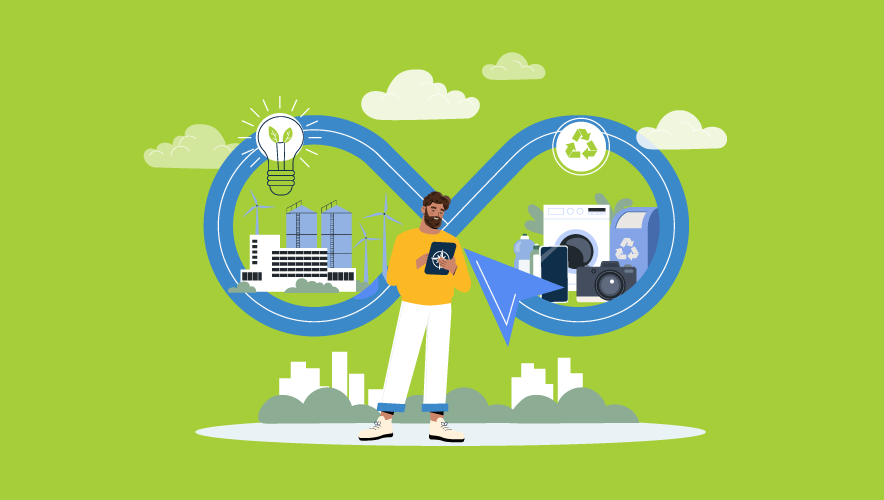The Efficiency Coefficient: How Companies Can Approach Sustainability
The Paris Agreement in 2015 marked a watershed moment, not just in the global effort to reduce the ramifications of climate change, but in the larger sustainability conversation. Many organizations, including those of us in security technology, began evaluating decisions and initiatives through a new lens while answering a critical question: How can we be effective and efficient while championing sustainable practices?
Suggesting such a shift can be unpopular—no company wants to sacrifice quality, especially those that have spent years building a reputation on reliability. If customers are happy and sales are good, why then fix something that is not broken?
Because ultimately, it’s the right thing to do and you may discover something throughout the process that makes you even better. Anchoring your processes to a greater goal that’s not just tied to sales but to an ideal fosters a mission-driven workplace where employees realize they’re contributing to the world at-large, not just to customers.
Our parent company ASSA ABLOY and its subsidiaries took a long look at how to do that, nearly two years ago, as we trekked through trial-and-error to identify processes that produced sustainable products and systems without yielding quality or effectiveness.
To tackle this big task, we started with the smallest pieces.
The result was the development of our “sustainability compass,” an internal North Star that guides decisions toward the ultimate goal of halving our greenhouse gas emissions by 2030 and reaching net-zero by 2050. Our research and development team utilizes that compass as a measuring stick when they’re developing new products. If the product isn’t consistent with the sustainable standards established in that compass, we won’t produce it.
Obviously, no two companies are exactly alike. Every organization needs to identify where that sustainable innovation is going to come from, whether it’s manufacturing, materials, energy, etc. However, there are common opportunities that if more companies recognize and implement, could go a long way toward making a significant impact on our environmental footprint.
Nuts and Bolts
To tackle this big task, we started with the smallest pieces.
Our first move was transitioning from traditional steel hardware to recycled aluminum. That hardware can be recycled again, and it makes assembling and disassembling our products easier—saving manufacturing time. Plus, we’re using common components, so the hardware used for one product is the same for another, thus conserving resources and saving time looking for spare parts for repairs.
Those components are produced from ethical local mills throughout the European Union, which are integral engines in fueling sustainable practices. These mills guarantee their components are comprised of at least 60 percent recycled materials. By narrowing our supplier relationship to the local level, we’re not only supporting local industry and employment, but we’re also championing sustainable practices that at times aren’t a component of larger, more mainstream suppliers.
We are also no longer using wooden crates in our packaging; they are cumbersome, difficult to dispose of, and usually end up in a landfill. Our new cardboard packaging is often made of recycled materials and can improve customer satisfaction since they don’t have to break down and figure out how to dispose of clunky wooden pallets and crates. Plus, like the hardware, it can also be recycled again.
Those measures may seem trivial, but they’re elemental building blocks needed to establish an efficiency identity across our organization. That identity has been verified through our ISO 14001 certification, which provides a framework for our environmental management system and ensures our impact is being measured and improved. With that in mind—and considering our thousands of key cabinets and intelligent lockers deployed across the globe—that impact becomes substantial.
What a company’s product is made of can say a lot about not only its brand, but also its culture, and ultimately, its customer experience. It also gives the company a chance to educate both internal and external audiences on why sustainability is important to them. Our products are composed of recycled materials because this aligns with the aforementioned sustainability compass, which guides every decision about how our products are made and delivered.
Works Well with Others
Creating environmentally friendly products is a positive first step, but how those products are integrated is equally as important in staying aligned with sustainability.
Some of the major catalysts ensuring that are strategic partnerships. Our company recognizes we cannot solve every security problem alone—we know our strengths and limitations. But by teaming up with fellow industry leaders, we discover mutually beneficial solutions that are not only effective and efficient but also flexible.
A perfect example is our partnership in the access control sector with companies like Honeywell and Gallagher. Combining their expertise in facility security with our asset resources creates a multi-dimensional environment where an administrator can now have greater control to where and what employees can access.
Prioritizing adaptability to various sectors also reduces time spent on cyclical reinvention for providers and training for users. Having a useful solution is great, but if it is not reliable, or does not mesh with the existing end-user ecosystem, it can require users spend unnecessary time learning a new software or make what is supposed to be a process improvement more challenging.
The key to approaching strategic partnerships is thinking evolutionary versus revolutionary. Let efficiency be the driver of innovation. Companies should ask themselves: “What are the verticals we’re not involved in yet but could be if we had the right partner?”
As always, those solutions need to be held to the standard of making processes and security more efficient for the end user while reducing the net impact on the immediate and global environment.
When You Get Down To It
Security technology is of course rooted in efficiency—protecting assets, information, and people to ensure their safety and effectiveness for longer periods of time. We are integrally involved in several industry verticals and one of the biggest themes we see across the board is how efficiently managing a small asset or process like a physical key, radio, or bottle of medicine can have a ripple effect on an entire operation.
Customers routinely say, “I never thought properly managing this would have such an impact on that.”
For example, there’s a facility company in Europe that oversees the maintenance and repairs for roughly 600 schools in one country. Previously, technicians had to come back to one central location to collect keys to make repairs. The company contracted with us to place key management cabinets in strategic locations throughout the country, which drastically reduced the fuel cost, emissions, and maintenance for their vehicles and increased the overall life of the keys themselves. It also gave technicians more time in the day to complete repairs because they weren’t driving as much to retrieve keys.
It may seem like common sense, but a surprising number of companies don’t take the time to consider these solutions. When they do, those are the lightbulb moments we hope for—customers realizing the security of one thing can positively impact something seemingly unrelated or unknown before and as a result, allow them to operate more safely and efficiently. That is when we know we have done our job right.
The need for those “efficient epiphanies” has never been more evident than in our current climate. The constantly evolving landscape of challenges in every sector necessitates a proactive approach to address threats before they become larger issues. By utilizing sustainable materials, pursuing strategic partnerships, and focusing on end-user integrations, we are better equipped to attack those threats of today, while positioning ourselves to address the threats of tomorrow.
Danny Garrido is president—Traka Americas—a global leader in electronic key and asset management that operates as part of ASSA ABLOY Global Solutions. Garrido has more than 22 years of experience in the security industry, ranging from owning his own security company to the corporate levels of Brinks and ADT, he oversees the overall vision & direction for the business, including strategic partnerships, operational & commercial competences, expansion into emerging markets and new business development.
Duncan Winner is chief technology officer—Traka Group—with more than 25 years of industry experience developing successful products and business growth. With a degree in integrated engineering, Winner has a history of delivering complex and challenging electromechanical and software-based products, including full product lifecycle design.
© Traka-ASSA ABLOY











